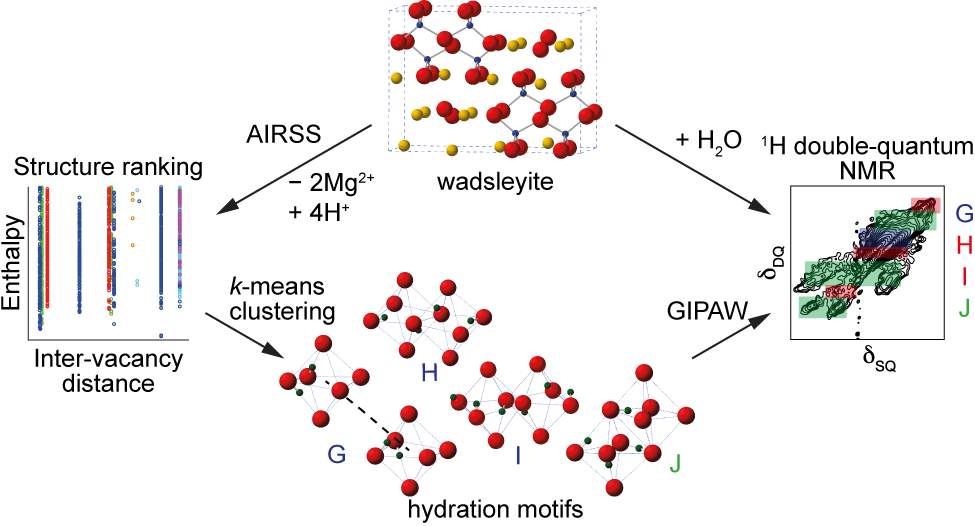Exploring the hydration of inner Earth minerals using NMR crystallography
Professor Sharon Ashbrook, School of Chemistry, University of St Andrews
The sensitivity of NMR spectroscopy to the local environment makes it an ideal tool for the characterization of disordered materials. Many structural models derived from XRD do not identify the position of light atoms such as \(^1\)H, but the position of these can have significant impact on the physical and chemical properties of materials.

In work published in J. Am. Chem. Soc. 141, 3024 (2019) and funded by the ERC, we have used an NMR crystallographic approach to understand the hydration of the silicate minerals that are present many hundreds of km below our feet in the Earth’s transition zone. Little is known about the mechanism and position of this hydration, despite the implications it has for mantle dynamics. We used ab initio random structure searching (AIRSS) to generate a set of possible hydrated structures for wadsleyite (\(\beta\)-Mg\(_2\)SiO\(_4\)), removing one or more Mg cations and randomly placing protons in the system. k-means clustering approaches, implemented in Soprano, allowed us to select sets of structures for which NMR parameters could then be calculated and compared to experimental measurements. It was not possible to reproduce the experimental spectra by simply considering the ground state structure, but good agreement was obtained when four low energy states were considered. Thus, the combination of experimental measurement, structure searching and computational prediction are able to provide new and detailed insight into the structure of the inner Earth.